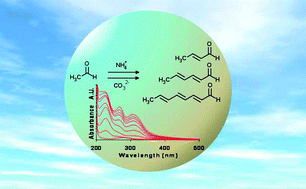Inorganic ammonium salts and carbonate salts are efficient catalysts for aldol condensation in atmospheric aerosols
Abstract
In natural environments such as atmospheric aerosols, organic compounds coexist with

* Corresponding authors
a
Department of Applied Environmental Science, Svante Arrhenius väg 8c, 106 91 Stockholm, Sweden
E-mail:
barbara.noziere@itm.su.se
Fax: +46 8674 7638
Tel: +46 8674 7281
b
Department of Organic Chemistry, Stockholm University, Svante Arrhenius väg 16c, 106 91 Stockholm, Sweden
E-mail:
acordova@organ.su.se
Fax: +46 815 4908
Tel: +46 816 2479
In natural environments such as atmospheric aerosols, organic compounds coexist with

 Please wait while we load your content...
Something went wrong. Try again?
Please wait while we load your content...
Something went wrong. Try again?
B. Nozière, P. Dziedzic and A. Córdova, Phys. Chem. Chem. Phys., 2010, 12, 3864 DOI: 10.1039/B924443C
To request permission to reproduce material from this article, please go to the Copyright Clearance Center request page.
If you are an author contributing to an RSC publication, you do not need to request permission provided correct acknowledgement is given.
If you are the author of this article, you do not need to request permission to reproduce figures and diagrams provided correct acknowledgement is given. If you want to reproduce the whole article in a third-party publication (excluding your thesis/dissertation for which permission is not required) please go to the Copyright Clearance Center request page.
Read more about how to correctly acknowledge RSC content.
 Fetching data from CrossRef.
Fetching data from CrossRef.
This may take some time to load.
Loading related content
